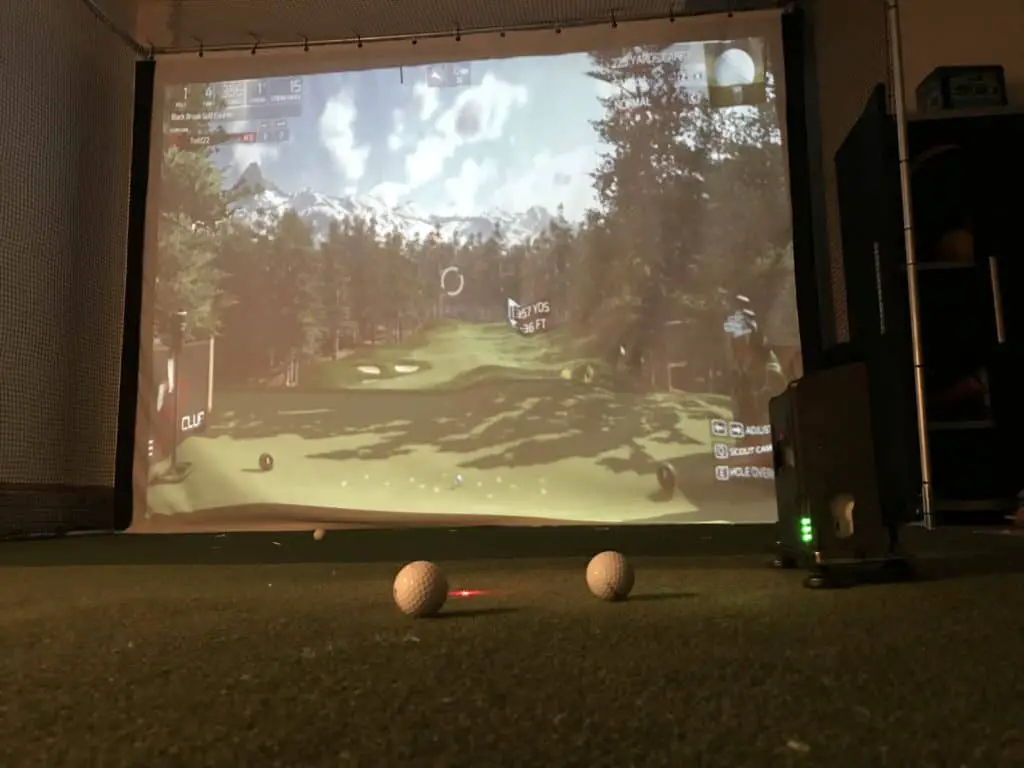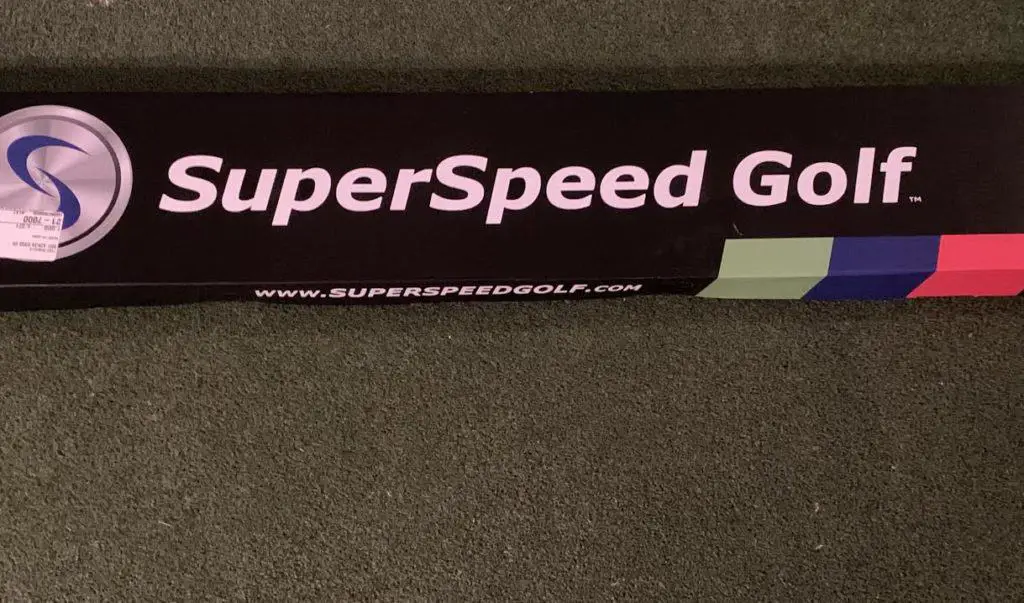5 quick tips to score better on par 5s:
- Keep Your Drive in Play
- Be Strategic With Your Second Shot
- Capitalize On Your Third Shot
- Practice your 3-10 Foot Putts and your 30 foot plus putts
- Train For Speed
For the beginner golfer the sight of a 525 yard par 5 might be overwhelming.
While for the single digit handicap golfer, they are looking at a par 5 as a birdie opportunity.
Regardless of your ability level, there is always room for improvement. Tracking your par 5 average over the course of 10 rounds can help provide greater clarity on what it might take to get your game to the next level.
The best golfers in the world capitalize on the par 5s and play them aggressively, hoping to have a 2 putt birdie or at least a birdie putt inside of 10 feet.
Overall, all golfers can view par 5s as an opportunity to make par or better or bogey at worse.
How To Score Better on Par 5s
Update: I have found my increase in driver swing speed from 98 to 108 miles per hour has been a game changer and worth the investment in my SuperSpeed Swing Training System. The extra speed gave me increased distance leading to more par 5s reach in two and more simple wedge shots into the par 5s!

Tip #1: Keep Your Drive In Play
The birdie or even the par is not made with the first shot on a par 5. There is plenty of time to set yourself up for a quality birdie or par depending on your current skill level.
We recommend keeping the ball in play, but also recommend hitting the driver unless it is an extremely narrow hole or there is a hazard that crosses the hole. We need to start off and gain some distance right from the first tee shot. Stay within yourself and get the ball out there, hopefully somewhere where you can take a full second shot.
The best golfers are able to hit their drivers long and straight enough to provide them with a competitive advantage. The golfer that is always hitting 3 wood or less off the tee might struggle on the par 5 because it makes the 2nd shot that much harder.
I would prefer to hit a driver, even if it ends up slightly in the trees, I can take a 2 or 3 iron and advance at least to the 150 or in area of the hole. Worse case scenario after a poor drive is that I have a 150 yard par 3 to make my 5.
Tip #2: Be Strategic With Your Second Shot
Each golfer must assess the situation of the hole they are playing. Some questions to consider:
- What danger is there around the green?
- Does this danger and risk outweigh the potential reward?
- What are the strengths of my game?
- Would I prefer to hit a greenside bunker shot or an 80 yard full sand wedge?
- Where am I at in my round? Would a bogey or worse ruin my round or match?
The golfer has to take the situation at hand and make a quality decision for the 2nd shot. The goal should be to get inside of 125 yards for the 3rd shot. If you are a longer hitter and can reach the green in two, make sure you consider the risk/reward for that specific hole.
I prefer to look for the bail areas and determine if I were to miss the shot, where I want to miss the shot. This helps me plan for my ball flight and play aggressive, yet conservative. For example if there is a bail area to the right, I will aim right and attempt to hit a draw. If the ball draws, I have the perfect shot. If it stays straight, I hit the bail area and have a simple chip. The only shot I have to more than likely avoid in this situation is the hook shot.
If you are an excellent wedge player, but struggle with the 3 wood, hit the 2nd shot in a position that leaves you with a wedge shot you prefer. The analytics will tell us the closer we can get the 2nd shot to the green, the lower our score is from a closer distance. For example, on average the golfer will score better from 40 yards vs 80 yards. So consider getting it as close as possible, but eliminating the dangerous areas.
Tip #3: Capitalize On Your Third Shot
On a par 5, the scoring often happens with the 3rd shot. Unless you completely over power the hole with a long drive, followed by a 2nd shot on the green, the 3rd shot is vital. Go ahead and make sure you have an accurate distance, preferably with a rangefinder to dial in your distances.
Understand how far you hit different wedge shots, pick your shot and commit to the shot. The goal is to leave yourself with a putt inside of 20 feet from around 80 yards or less than 10 feet from 40 yards and in. Make sure you are practicing these shots during your practice sessions as the shots between 40-80 yards can save you some serious shots throughout the round!
I would highly recommend creating a chart that looks somewhat similar to the one below:
| Club | Carry Distance (100%) | 90% | 80% |
| Pitching Wedge | 128 | 118 | 108 |
| Approach Wedge | 118 | 110 | 102 |
| SW Club | 105 | 97 | 91 |
| LW Club | 90 | 82 | 74 |
Understanding how far you hit 80, 90 and 100 percent clubs with each wedge helps you create the ladder that you need to pull off a quality shot.
I would recommend building charts like this, using a launch monitor. I prefer the Skytrak, but there are some affordable options on the market today that are true game changers!
Here are the top 3 options to check out:

Tip #4: Practice your 3-10 Foot Putts and your 30 foot plus putts
Two very important ranges on par 5s are the 30 foot putts (3 putt avoidance) and the 3-10 foot putts (bridie opportunities). I would highly recommend practicing these distances as often as possible. The best putters avoid the 3 putts on the longer putts and take advantage of the distances inside of 10 feet. These are great for birdie attempts and saving par when you miss a green in regulation.
Drill: Circle Drill
Put 6 balls around the hole anywhere between 3-10 feet. See how many of the 6 balls you can make. Continue to repeat until you reach new personal records. Don’t leave the course until you make all 6 from at least 5 feet or longer.
Drill: Lag Challenge
Mark off a spot 40 feet from the hole. Then draw putt tees around the backside of the hole and create a 3 foot radius. Take 10 balls and see how many out of the 10 you can get to within 3 feet from 40 feet.
Once again, if you can do this at an 80-90% success rate you will help make your golf round more stress free. The goal here is to prevent the 3 putt on the greens that you do hit in regulation!
Tip #5: Train For Speed
The ultimate way to improve on par 5s…gain more speed!
The bottom line is that the longer you hit a golf ball, the easier par 5s become.
This is no secret on the PGA Tour as the long hitters like DeChambeau, Dustin Johnson, Brooks Koepka and Justin Thomas dominate the par 5s and often lead the tour in scoring average on the par 5s. Distance matters and there is a way to hit the ball further!
I believe many used to believe, well this is just how fast I can swing.
Recent training tools have started to change many minds. We have seen many of the professional golfers get longer and longer with their tee shots as a result of additional swing speed. You will find many touring pros using the SuperSpeed System, which I highly recommend.
SuperSpeed Golf is one option to increase your swing speed through a science based overspeed training approach. In simple terms, you train by swinging a lighter club (20%) faster than you swing your driver. Over time, by training at a higher speed, your mind and body feel safe to swing that fast with your normal driver, resulting in an increase in driver swing speed.
The SuperSpeed System provides 3 different weighted sticks and takes the golfer through a training protocol every other day for about 15 minutes. The golfer can expect to see a 5-8% increase in swing speed, resulting in 20-30 yards for most golfers. The great news is that the 5-8% can be expected as early as the first training session. The additional speed will become more permanent after about 30-60 days of training.
My own experience has been an increase of 7-10 miles per hour on average from between 98-101 all the way up to 106-109. My goal is to hit the PGA Tour average of 113 mph in the coming months. I will continue to train every other day and watch in amazement as I am hitting drivers longer now than ever before!
Phil Mickelson has been known to increase his swing speed in the past year or so and is close to 120 miles per hour in his swing speed. There are potential results for golfers of all ability levels and age!
Check the current price on SuperSpeed Golf System, here!
| Original Swing Speed | After 4-6 Weeks | New Carry Distance | Total Distance |
| 95 | 102 | 245 | 265 |
| 100 | 108 | 259 | 279 |
| 105 | 113 | 271 | 291 |
| 110 | 118 | 283 | 303 |

Take Action – What You Can Do Today to Get Better
What does this mean for you? I believe in the following recipe to get better:
1 – Improve your motion in the golf swing by identifying a golf instructor. Here are some options:
Here is a list of golf instructors that we have reviewed:
2 – Train to swing faster and improve your swing speed. Here are some options:
Looking to gain more Speed and Distance in your swing. Two Options:
3 – Understand course strategy and work to break through your next barrier. Here is a series on breaking through:
We have provided guides on how to break 100, 90, 80 and 70. Check out more below, if interested.
4 – Practice Frequently
Did you know that I build a golf simulator in my garage and have played over 500 rounds of golf on my SkyTrak system? It has been a game changer and one worth checking out. Here are some of my other posts on golf simulators frequently asked questions:
- Is a Golf Simulator Worth It?
- How to Build a Golf Simulator?
- What is the Best Golf Simulator?
- Golf Simulator Accessories?
- How to Build a Golf Simulator for under $7000
- Top 11 Reasons to Buy a SkyTrak
- How to Build a Golf Simulator for Under $1000
- Why Build A Golf Simulator?
- What Space is Needed?
- Can A Golf Simulator Improve My Game?
- How Much Does A Golf Simulator Cost?
- Don’t Forget to Check out our 15 best golf swings of all time.
